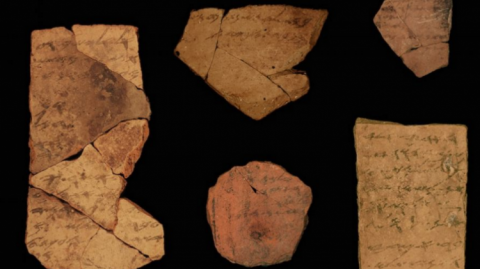Biblical texts existed earlier than thought
According to AP, the team used handwriting analysis technology, the likes of which is often used by banks to analyze signatures and also by intelligence agencies, to attribute the writing on the ceramic shards which date back to 600 BCE, to six different authors. While the text on the shards was not biblical in nature, the fact that six different people produced the writings has lead the team to believe that wide spread literacy existed in the Kingdom of Judah earlier than previously thought, which could mean earlier biblical writings, says AP.
Finkelstein told AP that for years he believed that a group biblical texts widely attributed to the period after the siege of Jerusalem, from the Book of Joshua to the second Book of Kings, were actually compiled in Jerusalem in the late 7th century BCE, close to 100 years before the siege. According to Finkelstein, the study's findings support his theory. "It's the first time we have something empirical in our hands," Finkelstein said.
The ceramic shards were found in remains of a military fortress from the kingdom of Judah located in the southern Israeli city of Arad. The team of mathematicians, archaeologists and a physicist, examined 16 ink inscriptions found on the shards using multispectral imaging to repair and piece together faded Hebrew letters and words, said AP.
Next, the team analyzed the writing using a computer algorithm, and were able to identify distinct strokes and handwriting styles. Arie Shaus, a doctorial student who worked on creating the algorithm told AP that the study marked the first time that such technology had been used to analyze hand writing from ancient Hebrew samples.
The writing was found to describe military expenses and troop movements, said AP. This suggests that people in a variety of positions in the military, ranging from those at the top of the chain of command, down to the fortress' deputy quartermaster were literate. Additionally, said AP, the style of the writings indicate that they were not made by a scribe.
These clues, plus the remote location of the fortress, support the theory that literacy was more wide spread than previously believed, the study says. If literacy was existed at this level it is possible that some biblical texts had already been written by that time, said AP.
Some of the oldest known biblical texts to have been found, the Dead Sea scrolls, are believed to be about 2,000 years old, written several centuries later that the inscriptions on the shards.

